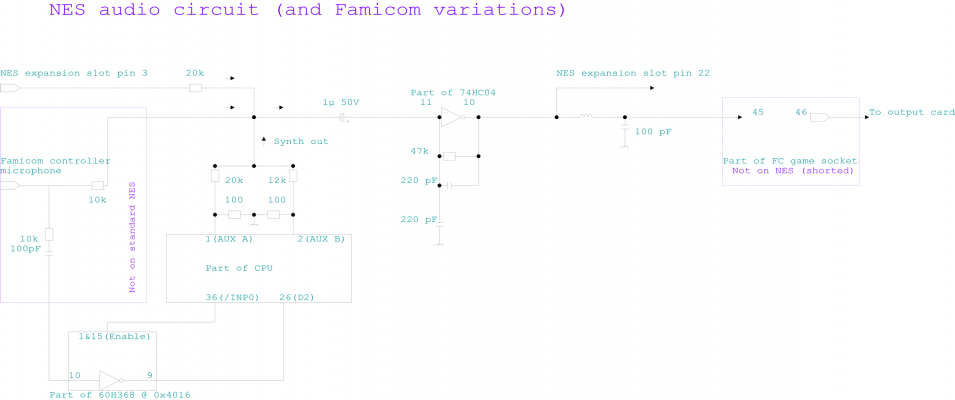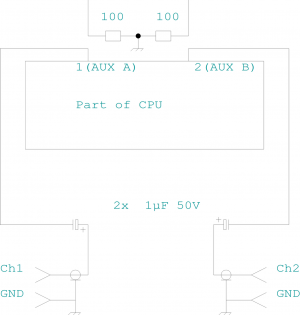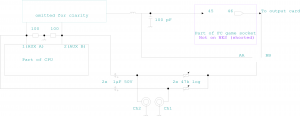NES:"Stereo" Audio Mod: Difference between revisions
Jump to navigation
Jump to search
(Picture coming later) |
mNo edit summary |
||
| Line 7: | Line 7: | ||
==Limitations== | ==Limitations== | ||
*As deducible from the above schematic, the plain mod described hereafter will not adequately include sound originating from the microphone or the NES expansion port, and none at all from a FC game card. This is a point in favor of the mixback type mod, however... | *As deducible from the above schematic, the plain mod described hereafter will not adequately include sound originating from the microphone or the NES expansion port, and none at all from a FC game card. This is a point in favor of the mixback type mod, however... | ||
*If the [[AV: | *If the [[AV:Stereo_to_Mono_Conversion#Resistive_combination|mixing resistors]] are not removed (which is a requirement for mixback mods, as well to continue using the regular mono output), channel separation will be reduced and further noise may be fed back in. | ||
**It is of course possible to replace the resistive mixer with [[AV: | **It is of course possible to replace the resistive mixer with [[AV:Stereo_to_Mono_Conversion#Active_combination|an active one]], as done by certain third party kits (currently not documented in this article). | ||
==Plain mod== | ==Plain mod== | ||
Revision as of 05:08, 7 December 2022
While the console as designed offers mono sound, it is possible to bypass the mixer and get true 2-channel sound (although not properly called, spatially related stereo) out of it.
This is possible because of an implementation detail in the console's sound synthetizer: the two square wave oscillators are tied to one output (AUX 0, called AUX A on Famicom), while all other three digital channels generate a separate signal (AUX 1/B).
Limitations
- As deducible from the above schematic, the plain mod described hereafter will not adequately include sound originating from the microphone or the NES expansion port, and none at all from a FC game card. This is a point in favor of the mixback type mod, however...
- If the mixing resistors are not removed (which is a requirement for mixback mods, as well to continue using the regular mono output), channel separation will be reduced and further noise may be fed back in.
- It is of course possible to replace the resistive mixer with an active one, as done by certain third party kits (currently not documented in this article).
Plain mod
- The CPU sound output is completely disconnected from the mixing/buffering components. (Optional step: see above.)
- An inline capacitor (1 microfarad, negative towards console) is added to each channel, for protection and minimal low-pass filtering (8 kΩ at 20 Hz).
- The desired output connector is added.
Mixback mod
- The CPU sound outputs are tapped, without disconnecting them from the PCB.
- Filter capacitors and output jack(s) are added, as above.
- Variable resistor(s), separate or dual and preferably logarithmic, are also connected at one extreme to the outputs.
- The existing mono signal is brought to the center tap of the potentiometers or trimmers:
- On a NES, the points marked AA or BB on the schematic are not only equivalent, but actually the same.
- On a Famicom, AA produces cleaner sound, but doesn't include expansion audio, in which case BB has to be used.


